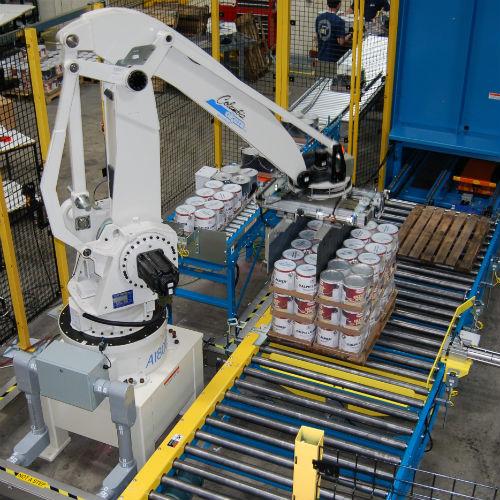3 Problems with Automatic Palletizers
Whenever a machine completes a process, there are always going to be problems. Some people believe that the more components a system has, the more that can go wrong. This is true with automatic palletizers, just like with many other machines. A palletizer is designed to replace the manual loading of pallets with an automated machine. Automatic palletizers either use a sorting and layering technique or a robotic loading process to load products onto a pallet for shipping. Depending on how the machine works, you might run into the following problems with your palletizer:
Slipping belts: Palletizers use a lot of belts to control the components of the system. These belts can wear out, slip, or get stuck. Usually, these problems occur less if the unit is used properly and the correct belts are in use. However, it is still likely that every so often you will have to stop loading the pallets to address belt issues.
Bulging layers: Some products load better onto pallets than others. One common problem that occurs with automatic palletizing machines is the problem of uneven or bulging layers. The products can shift and become positioned strangely on the pallet, leading to pallets that are unsteady and incapable of loading properly. The best way to avoid this problem is to ensure your machine is operating at the correct speed and the packages are compact.
Speed problems: Choosing a palletizer with the wrong loading speed for your production line can be disastrous. It is important to carefully evaluate the production time of your factory before purchasing any palletizer. The only way to fix speed problems is to replace the unit if it runs too fast or too slow for your production line. A few units may have the option to adapt the loading speed to fit your unique production line needs.
 |  |  |
| Palletizers – Ouellette Machinery Systems Inc. | Palletizers – Columbia Machine, Inc. | Palletizers – Columbia Machine, Inc. |


 Castings & Forgings
Castings & Forgings Bulk Material Handling
Bulk Material Handling Electrical & Electronic Components
Electrical & Electronic Components Flow Instrumentation
Flow Instrumentation Hardware
Hardware Material Handling Equipment
Material Handling Equipment Metal Cutting Services
Metal Cutting Services Metal Forming Services
Metal Forming Services Metal Suppliers
Metal Suppliers Motion Control Products
Motion Control Products Plant & Facility Equipment
Plant & Facility Equipment Plant & Facility Supplies
Plant & Facility Supplies Plastic Molding Processes
Plastic Molding Processes Pumps & Valves
Pumps & Valves Recycling Equipment
Recycling Equipment Rubber Products & Services
Rubber Products & Services